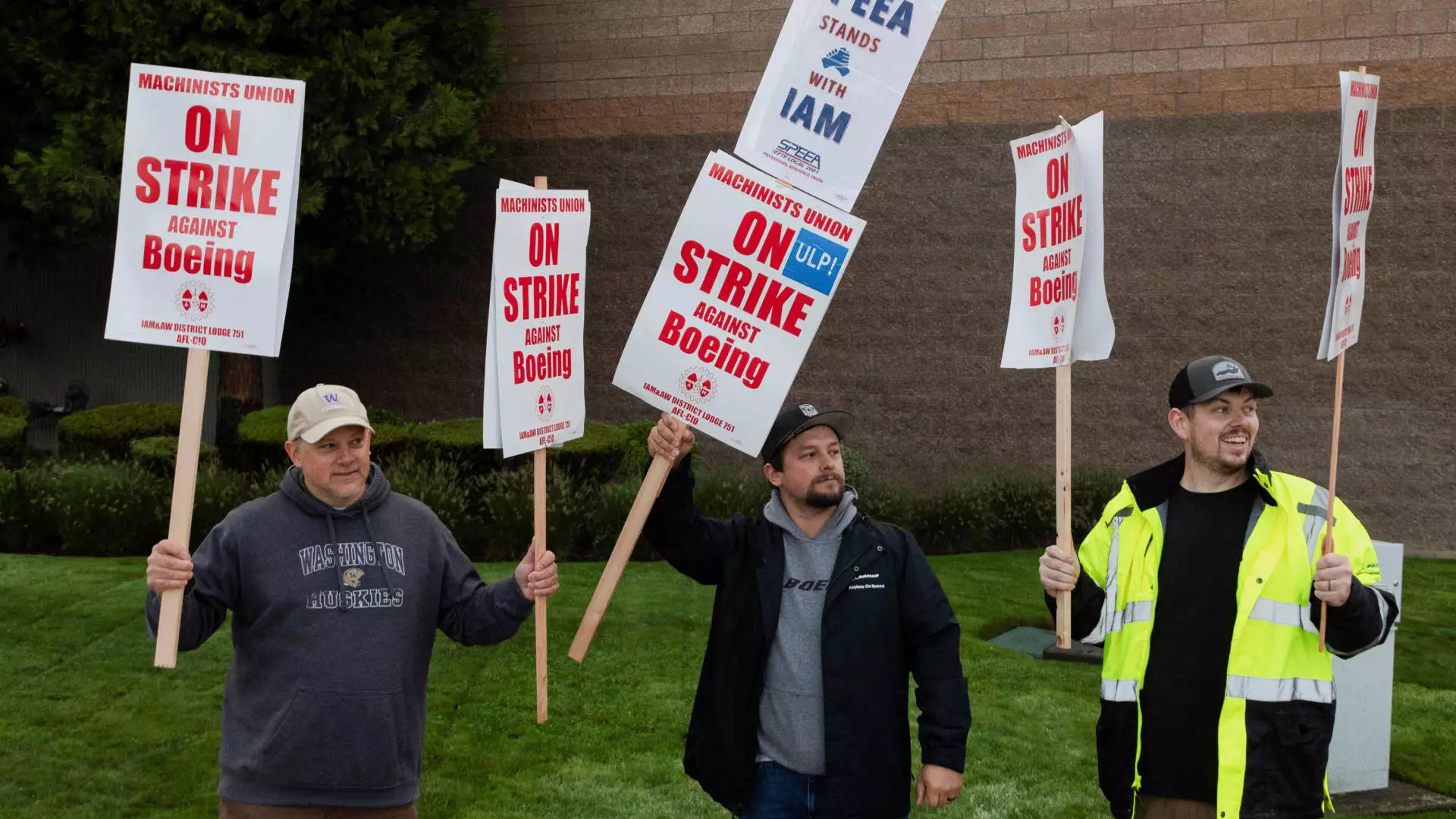In a critical juncture for Boeing, the ongoing labor strike has emerged as a significant challenge, creating a ripple effect through the company’s production and recovery strategies. The strike, initiated shortly after midnight on a recent Friday, follows a decisive rejection by factory workers of a proposed labor contract, which sought to address various grievances surrounding wages and working conditions. As a consequence of this labor unrest, Boeing’s Chief Financial Officer (CFO) Brian West has highlighted how the ongoing situation threatens to compromise the company’s ability to deliver aircraft on time, particularly its flagship 737 Max, produced in Renton, Washington.
Boeing’s CFO communicated that the financial ramifications would vary significantly based on the duration of the strike. The potential for delayed deliveries could exacerbate an already precarious financial situation for Boeing, which has been grappling with substantial debt. The analysts from major credit rating agencies have sounded alarms, with Moody’s placing all of Boeing’s credit ratings under review for potential downgrade, and Fitch Ratings warning of increased risk if the strike persists. Such downgrades would likely escalate borrowing costs, complicating revenue generation vital for the company’s stabilization and recovery plans. Indeed, market sentiment reacted unfavorably with Boeing’s share price dropping nearly 4% by mid-afternoon on the same day the strike commenced.
The crux of the strike centers around workers’ disappointment with the tentative labor agreement proposed by Boeing. While the deal included a notable 25% wage increase spread over four years, workers argued that it fell short of adequately addressing the steep rise in living costs, prompting a strikingly high rejection rate of 94.6%. This illustrates a broader disconnection between the workforce’s expectations and the company’s proposals. The workers’ overwhelming support for a strike indicates a mounting frustration with Boeing’s approach to labor relations, suggesting that there are deeper issues at play beyond stunted wage growth.
Labor strikes are not new to Boeing. The last significant work stoppage in 2008 lasted nearly two months, indicating that labor disputes can have long-lasting impacts on operations. In recent years, Boeing has faced heightened scrutiny over production issues, particularly following several safety crises that damaged its reputation. For instance, incidents involving the 737 Max, including a door plug blowout in January, led to increased regulation and inspections by the Federal Aviation Administration (FAA). This scrutiny complicates Boeing’s ability to ramp up production efficiently, and the current strike further compounds these operational challenges.
As Boeing’s management contemplates the best course of action, West emphasized a renewed commitment to re-engage with labor representatives, signaling a potential shift towards a more conciliatory approach. The urgency to resolve these tensions is paramount, as a prolonged strike could threaten not only Boeing’s production capabilities but also its broader recovery trajectory. The new CEO, Kelly Ortberg, will likely play a crucial role in rebuilding trust and negotiating a resolution that addresses worker’s concerns while aligning with the company’s operational goals.
The ongoing labor strike at Boeing marks a critical moment in the company’s history, as it seeks to navigate through a nexus of operational, financial, and reputational hurdles. With analysts predicting a $1.5 billion impact from a hypothetical 30-day strike, the stakes are undeniably high. For Boeing, the challenge lies not just in addressing labor grievances but also in ensuring that its recovery plan adapts to the realities of a dynamic workforce landscape. As the situation evolves, the implications of this labor strife will resonate throughout the aerospace industry, illuminating the fragile balance between corporate objectives and employee satisfaction. Waiting on the horizon is a reminder that, in industries like aerospace, the connection between management and labor can greatly influence the trajectory of recovery amidst relentless challenges.

